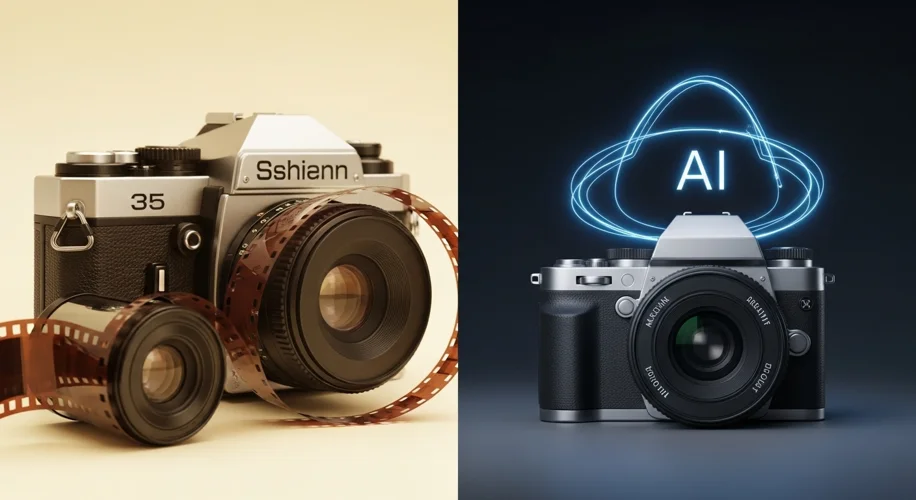Hey, grab a coffee. I was thinking the other day about something that feels really relevant right now, but it happened years ago. It’s about cameras, actually.
Remember film cameras? Maybe you’re too young, but for a good chunk of my life, that’s what photography was. You’d buy a roll of film, careful with each shot because you only had 24 or 36 exposures. You’d click the shutter, hear that satisfying whir, and then… wait. You had to finish the roll, take it to the drug store, and wait a day or two for development. The anticipation was real. And when you finally got those prints back, it was like magic. A tangible thing, proof you were there.
Then, digital cameras started creeping in. Do you remember the early ones? They were clunky, the resolution was often terrible, and the photos just looked… digital. Pixels were visible. And man, did people hate them.
“It’s not real photography,” people would scoff. “It’s just pixels, not light hitting chemicals.” There was this whole purist camp. They said digital was cheating, soulless, that it lacked the ‘craft’ of film. Professionals especially were skeptical. Why give up the control and quality of film for these grainy, low-res images?
But here’s the thing: digital got better. Fast. Suddenly, you could take hundreds of photos without buying film. You could see your shot instantly. No more waiting, no more wasted rolls. You could edit on your computer, share photos by email (wild, right?), and photography became accessible to everyone. The cost dropped to almost nothing per shot.
It democratized photography. Anyone with a digital camera could experiment, learn, and improve without spending a fortune on film and development. The ‘craft’ shifted from darkroom chemistry to understanding light, composition, and post-processing on a screen. Many pros eventually switched because the benefits – speed, iteration, immediate feedback – were too powerful to ignore. They didn’t stop being artists; they just used a new brush.
So, Why Does This Matter Today?
Well, doesn’t that sound a bit familiar? Think about all the conversations happening right now around AI and creative work – AI art, AI writing tools, AI music.
“It’s not real art,” some say. “It’s just algorithms, it lacks soul.” “It’s cheating.” The skepticism, the fear that it diminishes human creativity, the worry about what it means for artists and writers – it echoes that film vs. digital debate almost perfectly.
We’re in a similar moment of disruption. Just like early digital cameras, early AI tools might seem clunky or imperfect. But they’re improving at an incredible rate. They offer convenience, speed, and new possibilities that were unthinkable just a few years ago. They can democratize creation, allowing more people to bring their ideas to life.
Does it mean photographers are gone? No. Does it mean writers or artists will disappear? Probably not. What it does mean is the tools change. The definition of “craft” expands. The skill shifts from mastering a specific physical process to mastering a new digital process, or even learning how to prompt and direct an AI to achieve a vision.
The value isn’t in resisting the inevitable march of technology, but in understanding how to wield these new tools. It’s about how we adapt, how we integrate them into our creative process, and how we continue to tell our stories or express our visions, even if the medium looks different. The human element – the idea, the emotion, the unique perspective – that’s still the core. The tools just change how we get it out into the world.
So, next time you hear someone dismiss a new technology as “not real” or “cheating,” remember those digital cameras. History shows us that what seems like a threat often just becomes the next evolution.

